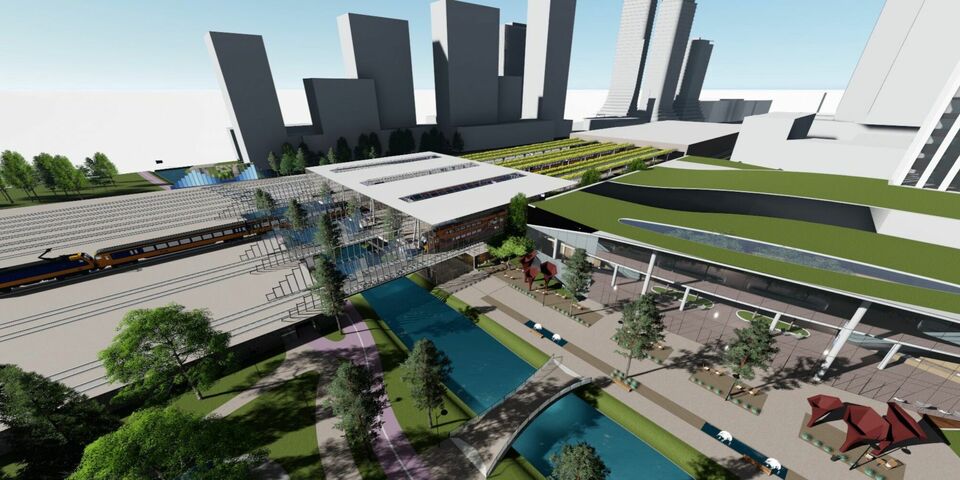Development plan connects TU/e directly with central station
Eindhoven train station is set to become an international junction and the plans for this development are shaping up nicely. On the north side of the station ten thousand homes are due to be built and with more greenery being added there, in particular along the River Dommel, the TU/e campus will gain a direct connection to the station.
These intentions are outlined in the master plan Knooppunt Eindhoven XL (Junction Eindhoven XL), as the city council has dubbed the development of the area around Eindhoven station. Longer platforms are envisaged so that many more and longer trains can stop, and a second entrance and exit are needed on the north side of the station - level with the River Dommel - so that in future a rapid, direct connection with TU/e's campus can be accommodated.
The station isn't the only area to be taken in hand as part of this 'upscaling'. The areas adjacent to both sides of the station will also see changes. The south side is the intended site of new offices and homes. The plans for this area are being prepared in phases. To the south west of the station will appear District E: three tall towers for offices and apartments. The rest of the planning concerns the terrain on the south-east side of the station. This too will accommodate high-rise buildings.
Similarly, the north side of the station will gain new office and residential accommodation in the period leading up to 2035, taking in an area where the Beursgebouw, the former trading exchange building, now stands. The building plans for the Bunker on the Kennedylaan form part of this planning remit. The 'Fellenoord' will gain homes along its two sides and more greenery, and will be narrowed. As a direct consequence, it will lose its character as a through road. The Dommel valley will be transformed into a city park, giving TU/e students and employees direct access to the station.
TU/e professor Ruth Oldenziel was a member of the university's Sustainability working group four years ago. She says that at the time the group submitted a plan to the municipality and the Dutch Railways (NS) for improving the connection between the station and the campus. The idea was to achieve this by bridging the Dorgelolaan. According to her, the plans faltered because NS Vastgoed, the property arm of the railways, wanted travelers to pass by the shops on the station concourse.
"The situation as it now stands at the Dorgelolaan crossing is a classic example of there being no coordination between conflicting traffic flows," says Oldenziel. "Cars, pedestrians, cyclists; all the traffic chaotically intermingles." She believes the municipality's plan is part of a trend evident in other large cities these days: increasing the density of homes and offices around stations, which themselves are becoming increasingly multifunctional.
According to Bert Verheijen, policy officer at Real Estate Management (DH) and also a member of the steering group back then, a second entrance by the River Dommel is a logical option. "Every day somewhere between fifteen and twenty thousand people travel back and forth between the station and the campus. This number will only increase in future, certainly if Fontys starts offering its technical programs here on the campus in the summer of 2019. That will add roughly another five thousand people. You'd think the NS would want to offer these people another station entrance than the current one at bus station Neckerspoel."





Discussion